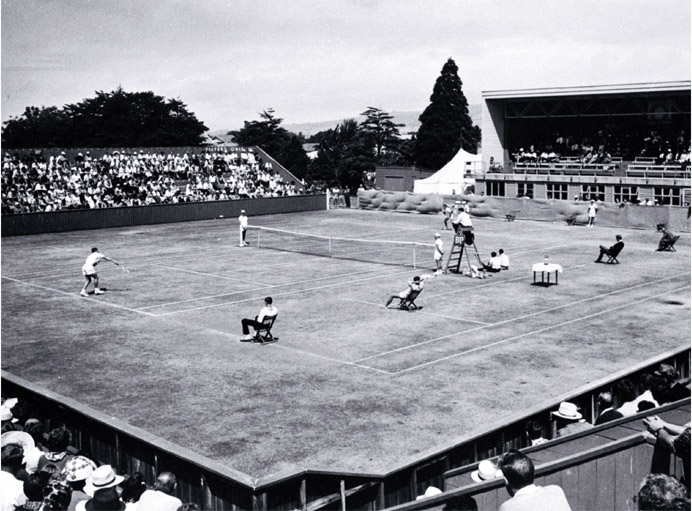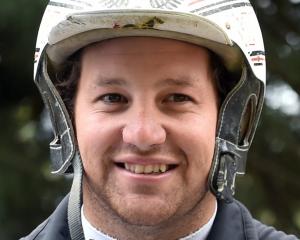
Almost a decade after liquefaction and tremors produced the last surface Tennis Canterbury needed at Wilding Park, a plan to clone the courts used at grand slam venues is running smoothly.
Wimbledon’s traditional fescue/ryegrass mix and the red dirt synonymous with Roland Garros are earmarked for the spiritual home of the sport in Canterbury, if not New Zealand, as the post-earthquake regeneration project continues.
Wilding Park already features the hardcourts associated with the Australian and US Opens, so now ambitious Tennis Canterbury chief executive Ryan Forbes is setting his sights on Europe.
“We want to replicate as close as possible the grand slam surfaces because that’ll give us an opportunity (to host) at ITF level,” he said.
“One of the grass courts will be a feature court so we can host the Davis Cup.”

The facility’s original grass courts were ruined by the February 22, 2011, earthquake, a natural disaster that could have seen Tennis Canterbury abandon the headquarters named after Wimbledon champion Anthony Wilding, who was killed during World War 1 in 1915.
Post-earthquake, Christchurch City Council, the Wilding Park Foundation and Tennis Canterbury pondered whether to relocate to the Nga Puna Wai sports hub in Wigram, which features 12 acrylic courts.
But Tennis Canterbury opted to hunker down, prioritise the repair of six indoor courts and then make the 18 outside playable.
They then convinced the Wilding Park Foundation, which owns the Linwood complex to retain the block which used to accommodate nine grass courts.
“Fortunately we were able to convince the foundation board to hold on to it and more excitingly we’ve appointed a contractor to reinstate the nine grass courts,” Forbes said.

Forbes, who spent time at Wimbledon when he worked in London, has been in touch with the All England Lawn Tennis and Croquet Club to get Wilding Park’s grass as close as possible to the hallowed turf.
“They had to go a 100 per cent ryegrass because of the intensive usage (during Wimbledon). They recommended we use what they used to have, a fescue/ryegrass mix,” Forbes said.
“They said: ‘We’d actually prefer to do what you’re doing’.”
Forbes said only top-class grass – and eventually clay – court facility in New Zealand would benefit both local and overseas players, with the Australian market a target if and when the pandemic eases.
“It’ll give out top players a competitive advantage if they’ve played on grass, they can come here and play against teams that wouldn’t necessarily be used to playing on grass,” Forbes said.
Tennis Canterbury could also entice overseas players to Christchurch to use the courts before tournaments.
“Australia doesn’t have Wimbledon-style grass. They have Italian-style clay but they don’t have the opportunity to play on all grand slam surfaces in one place,” Forbes said.

Forbes said about $10 million was needed to complete Tennis Canterbury’s vision for the new Wilding Park, and he was confident it would reach fruition.
“That’s not unrealistic from a corporate backing and grant funding perspective,” he said.
“As people start seeing we’re breathing life back into this facility, they come out of the woodwork . . . philanthropists and people with an interest in the game are very keen to be involved now it’s back on track.
“The intention is to turn this into a world-class tennis facility which will bring significant commercial benefit to this city.”

The concrete block volley wall survived a barrage of ground strokes from Bjorn Borg and the Christchurch earthquakes, though it was still on shaky foundations once the future of the city’s tennis headquarters came into play.
Demolition was an option after the February 22, 2011, earthquake, though Forbes gave those suggestions a gentle serve as he rallied to save another connection with the sport’s past.
Forbes had already insisted the wrought iron war memorial gates on Woodham Rd be restored, a process which saw ‘Wilding Park 1927’ re-emerge after being sandblasted and repainted to its former glory last September.
“There’s so much providence in these gates. I was determined to make sure we made a statement about restoring and holding on to some of this great history,” he said.
Forbes applied the same philosophy to the less aesthetically pleasing grey blocks flanked by wire mesh fencing.
“There was a discussion about getting rid of it,” said Forbes, who has fond memories of practicing against the wall during his school days.
“I ended up hitting on that side of the wall and a character (who swept into the car park in a Ford Zephyr replete with fluffy dice) who turned out to be Kelly Evernden was on the other side.
“Some of the (New Zealand) greats like Onny Parun and Brian Fairlie used that wall . . . Bjorn Borg hit against it before an exhibition match with Chris Lewis, who had just got to the final of Wimbledon (in 1983),” Forbes recalled.
So the wall will also be rejuvenated and have names of local and international stars who honed their skills there drilled into the concrete.
“We’re going to put plaques on it so when kids hit on this volley wall they’ll understand this whole venue has a lot of history with some greats of our game.”
Some of those names – notably Wimbledon champion and World War 1 casualty Anthony Wilding – will also feature in a planned walk of fame towards the entrance to the indoor courts, photos will line a corridor.
“We want to make it clear when you’re walking in here, you’re following in their footsteps,” Forbes said.

Juniors earmarked for potential greatness and casual players happy to just get it over the net inside Wilding Park can access the same shot-perfecting technology employed by Novak Djokovic and Rafael Nadal.
Smart Court technology is used to rule when elite players challenge line calls, and it is also available for players at Tennis Canterbury’s headquarters.
Six cameras focus on one of the indoor courts and record information that can be used by coaches and players alike.
“Not only can it umpire a game, it also gives you stats like the speed of the spin,” Forbes said.
“High performance athletes can serve a hundred balls and the technology can call it in, out, how fast it was.
“The coach can then get instant feedback, they don’t have to just rely on their eye.”
Smart Court technology cost $100,000 and is one of only two in New Zealand – the other is in Auckland.
Tennis Canterbury also established a high performance programme for six athletes in January, so the pro shop has been compressed and bookended by a gym tailored for tennis players and a physio room.
And the recreational player hasn’t been ignored with the indoor courts accessible 24-7, a move popular with taxi drivers.
They’re not ready for bed at 2am so they can play for a couple of hours,” Forbes said.













